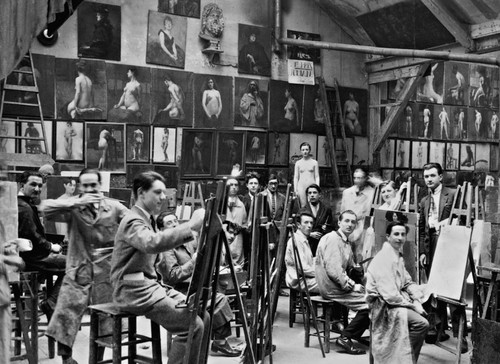
Berlin – Whoever would have thought it: in this day and age, capitalism being extolled as a remedy. Not by desperate governments or bankers fearing for their bonuses – but by American writer and social critic Camille Paglia.
In an essay entitled How Capitalism Can Save Art, Paglia writes that no major artist has emerged since the 1970s and that creativity is only to be found in design and architecture. “Artists should learn to see themselves as entrepreneurs,” she says.
In Germany this message has apparently already hit home. There is a wide variety of courses on offer to teach art students how to survive in today’s economy. In fact, getting rid of the “starving artist” cliché is even considered a state matter, as the Federal Competence Centre for Cultural and Creative Industries, created in 2007, shows. In eight German regions, the center offers potential artists a free orientation session with a counselor who can sound out their “business idea” and discuss its “market potential.”
But, do not worry, young creators: your idea doesn’t have to be anything remotely as concrete as a business plan. Christoph Kober, a center associate, says he’s talked to many art school graduates who had no idea how they could monetize their talent. Counseling in such cases revolves around exploring possibilities for doing so, from grants to crowd funding. Demand for the sessions is high, Kober says: there have been 8,000 in the last three years alone.
In Berlin, the Goldrausch (Gold Rush) project for female artists has existed since 1989. This is a yearlong, free course to “professionalize” women artists that is financed by the Berlin state government and the European Social Fund. According to Goldrausch project managers Birgit Effinger and Hannah Kruse, the goal of the course is for “women artists to also be taken seriously economically” and in general, for both men and women artists to be able to earn a living from their art.
Course content includes ways of presenting oneself, and a basic look in the different aspects of being self-employed. The young artists are also told to avoid trying to mold their work to please the market. Berlin artist Lotte Günther says the course really helped her self-confidence – and made her pro-active, because she learned how naïve it was to hold out for the idea that it was enough to make good art and the whole world would sit up and take notice.
Beware of pseudo-galleries and pseudo-art collectors
Such courses have also taken hold at German universities of applied art, where students take them as part of their arts training. According to Effinger, the economics of a life in art are getting ever more attention in curricula and she and Kruse have been hired as external lecturers at schools in Hamburg, Bremen, Karlsruhe, Stuttgart and Dortmund. The women say feedback is good, and that their courses are “alarmingly full.”
At Berlin University of the Arts, former gallery owner Joachim Becker has since 2008 been teaching a course entitled From the Academy to the Art Market in which legal issues and relations with public institutions and commercial art galleries are examined.
That so many artists fail to earn a decent learning is often not down to the quality of their work, Becker says, but rather because they don’t know how to view themselves as a business, and let themselves get talked into selling work for ridiculously low prices by pseudo-galleries, pseudo-collectors and pseudo-art lending libraries.
Larissa Fassler, who took the Goldrausch course in 2009, takes a slightly critical look at preparing students so early for market realities. Of course the idea is to be able to live from one’s work, she says, and particularly in Berlin where there is such a large gallery scene – many art graduates feel a lot of pressure. That means that after graduation, instead of focusing on creating art, they may put their energies into trying to find a gallery to represent them. However, she does say that for her the course was a positive and helpful experience particularly in regard to representation but also in how to manage relations with the art gallery that now represents her.
One thing is sure: however you feel about the art market, right now there is no alternative model in sight. From that standpoint, a pragmatic approach to its realities makes sense. Whilst of course young artists shouldn’t be let loose unprepared into the world in general and the art world in particular – basic knowledge of the rules of the game is not going to improve the precarious earnings situation for all independent artists.
One can only hope that that is also communicated to arts students. Berlin artist Lotte Günther, however, still waxes positive about her experience. Besides the Goldrausch course she also took Becker’s course, and says it helped her realize that actually it wasn’t all about finding a gallery fast. With that weight off her shoulders she looked around at other options – and landed a Cité des Arts grant in Paris.